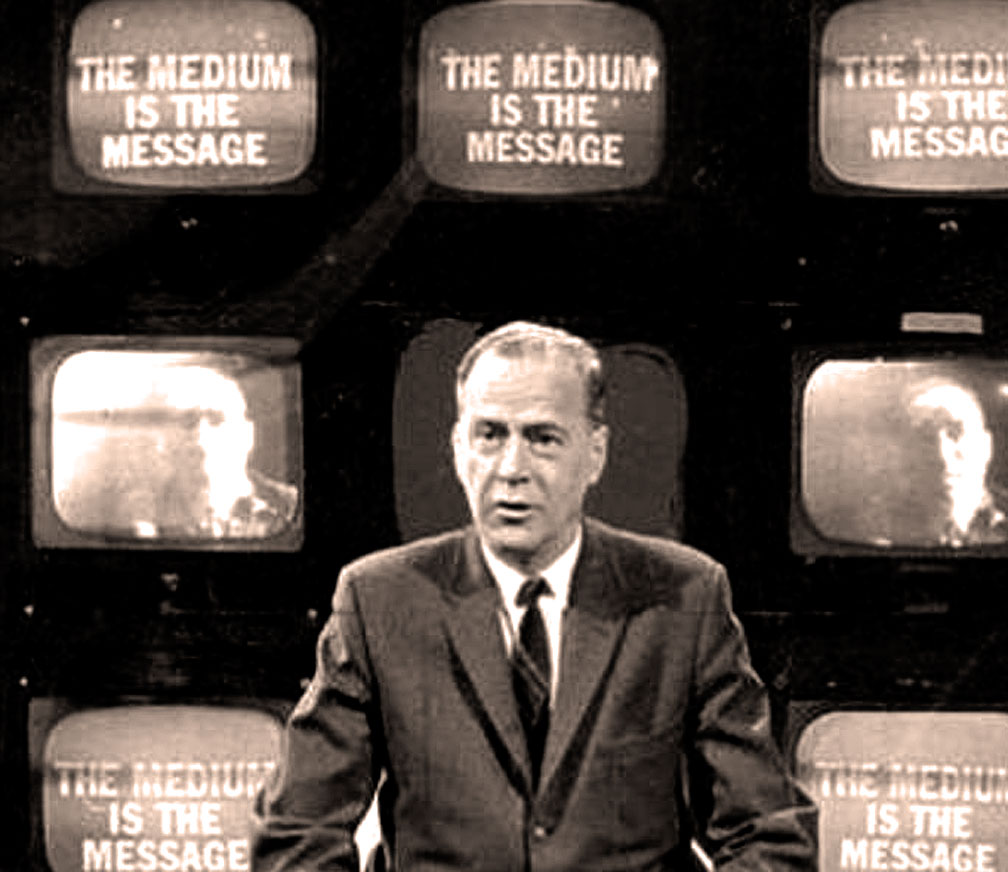Can’t name a thinker from the second half of the 20th century who was more right about the seismic changes that were to come than Marshall McLuhan. Not Andy Warhol or Jane Jacobs or George Carlin or Malcolm X or anyone. I wonder if he doubted all he’d said when he was cast from the zeitgeist and accused of being a mountebank as his celebrity faded. Likely he still knew he was largely correct.
A McLuhan quote rebounding around Twitter today: “World War III [will be] a guerrilla information war with no division between military & civilian participation.” That line, from 1970’s Culture Is Our Business, sums up the destabilized, decentralized state of life in 2017 in the wake of a Presidential election fought by bot armies. There was a time not too long ago, during the Arab Spring, when social media was greeted as a liberator, but now we have direct evidence all that connectedness has delivered a permanent state of anarchy. The term chaos agent, long used to describe individuals, is today an apt descriptor for the most popular medium.
What the theorist feared most of all was the Global Village, the reality that we were all becoming one tribe because of satellites and other communication enablers. It may have seemed especially misanthropic during the decade that gave us the Summer of Love, but it was really just a practical concern. And now that we’re a computerized society, all living in the same room, the technologies will endeavor to bring us even closer–inside of each other’s heads in unprecedented ways.
In “DARPA’s Ex-Leader’s Speculative Dream of Mind-Melding Empathy,” Alexis Madrigal of the Atlantic writes of Arati Prabhakar’s Aspen Ideas Festival speech about a radical vision of increasing connectedness. The journalist, very appropriately, believes it may create a nightmare. An excerpt:
Then she delivered the true Utopian dream:
“Imagine if we could connect among ourselves in new and deeper ways and imagine if those connections happened in a way that gave us so much empathy and understanding of each other that we could put our minds together, literally, to take on some of the world’s hardest problems.”
She did not expound on the image, but one imagines she’s thinking about a kind of direct brain-to-brain interface.
DARPA has, after all, invested a lot in direct electronic brain interfaces. In one research program, they’re working on “intuitive” neural interfaces for controlling prosthetic limbs. In another, they’re creating “an implantable neural interface able to provide advanced signal resolution and data-transfer bandwidth between the brain and electronics.” The goal there is to create a translator between “the electrochemical language used by neurons in the brain and the ones and zeroes that constitute the language of information technology.”
And once you’ve got intuitive neural controls and a translator that lets you send brain signals into computers and back again, it does not seem an incredible leap to hook two (or … a million?) humans up together.
“If we could get to that future, we would look back at today’s reality and it would look like black-and-white,” Prabhakar said. “It would look like flatland.”•
Tags: Alexis Madrigal

